
Roots
To stand on the sun-warmed earth of ancient Kemet, to feel the dry air brush against one’s skin, is to begin to understand the deep connection between daily life and the meticulous care of hair. The Nile’s gift of life, the desert’s embrace, all shaped how people lived, including their personal presentation. Far from a superficial concern, hair in ancient Egypt was a testament to hygiene, social standing, and even a connection to the divine.
Their tools, though seemingly simple to our modern gaze, were born of a profound understanding of natural materials and human needs, crafted with an artistry that speaks across millennia. These implements were not merely functional; they were extensions of a philosophy that held cleanliness and beauty as fundamental tenets of being.

Essential Grooming Tools
The foundation of ancient Egyptian hair care rested upon a few core tools, crafted from materials readily available in their environment. These were the daily companions, the quiet helpers in maintaining personal presentation amidst the desert climate.
- Combs ❉ Among the oldest hair accessories unearthed, combs were indispensable. Early examples dating as far back as 3900 BCE have been found in women’s tombs, often fashioned from ivory or wood. Some bore intricate animal motifs, like giraffes, ostriches, and wildebeests, suggesting a deeper cultural or ritualistic connection. These tools served not only to detangle and smooth but also to distribute oils and unguents evenly through the hair.
- Razors ❉ A striking aspect of ancient Egyptian hair practices was the widespread adoption of shaving, particularly among men and priests. Copper razors, some dating to the 3rd dynasty (around 27th century BCE), represent early forms of hair removal tools. These were essential for maintaining the clean-shaven look often preferred, not only for aesthetics but also for hygiene in the hot climate, reducing the risk of lice. Archaeologists speculate some tools might have served a dual purpose as both tweezers and razors.
- Tweezers ❉ For removing individual facial or body hairs, tweezers were employed. These could have blunt or sharp ends, designed for precision. The practice of removing all body hair was common, underscoring a cultural emphasis on smooth, hairless skin.

What Materials Were Used in Ancient Egyptian Hair Tools?
The ingenuity of ancient Egyptians shines through their selection of materials for hair tools. They utilized what the land provided, transforming raw resources into functional and often beautiful objects.
Combs, for instance, frequently appeared in wood or bone. The smooth, natural feel of these materials would have been gentle on the scalp and hair. Ivory, a more luxurious choice, was reserved for the elite, often adorned with carvings that reflected their status. Razors were typically made from copper or bronze, metals that could be sharpened to an effective edge for shaving.
Mirrors, essential for viewing one’s coiffure, were crafted from polished copper alloy, and sometimes silver or gold, reflecting a clear image for grooming. Hairpins, used to secure styles, came in a variety of materials including bone, ivory, wood, steatite, glass, gold, silver, and bronze, showcasing a range from practical to opulent.
Ancient Egyptians skillfully crafted their hair tools from available natural resources, prioritizing both function and aesthetic.
The choices of material often mirrored social standing. While commoners might use simpler wooden combs or basic copper razors, the affluent had access to finely carved ivory, gleaming metals, and even hairpins adorned with precious stones. This differentiation in materials not only served a practical purpose but also visually communicated a person’s place within the societal structure.
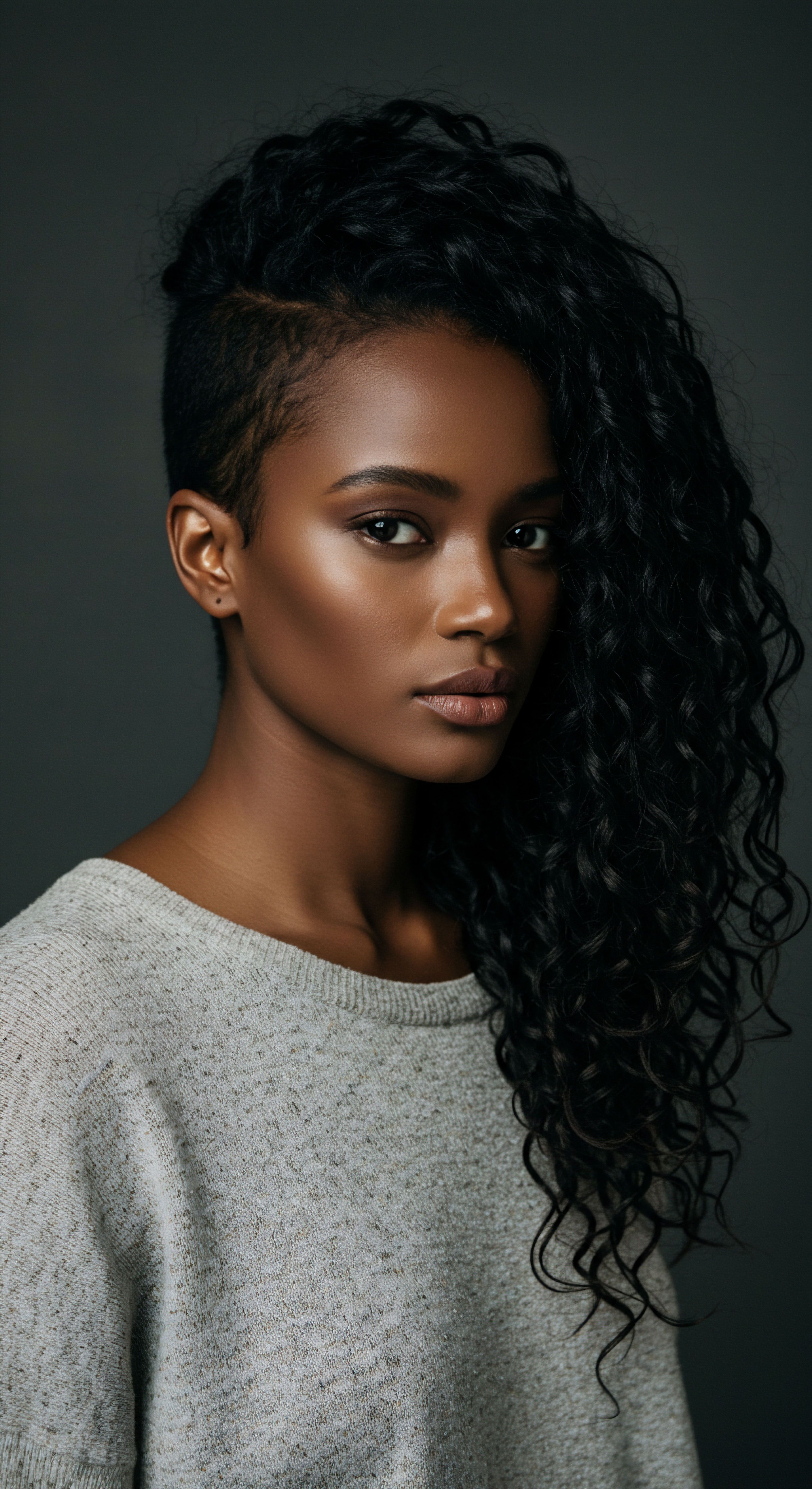
Ritual
Stepping beyond the foundational tools, we enter the realm of daily ritual, where hair care transformed from simple hygiene into a deliberate art. The sun-drenched days of ancient Egypt called for practices that protected and styled, giving rise to an array of techniques and specialized implements. Understanding these rituals provides a window into the routines that shaped personal presentation and identity.
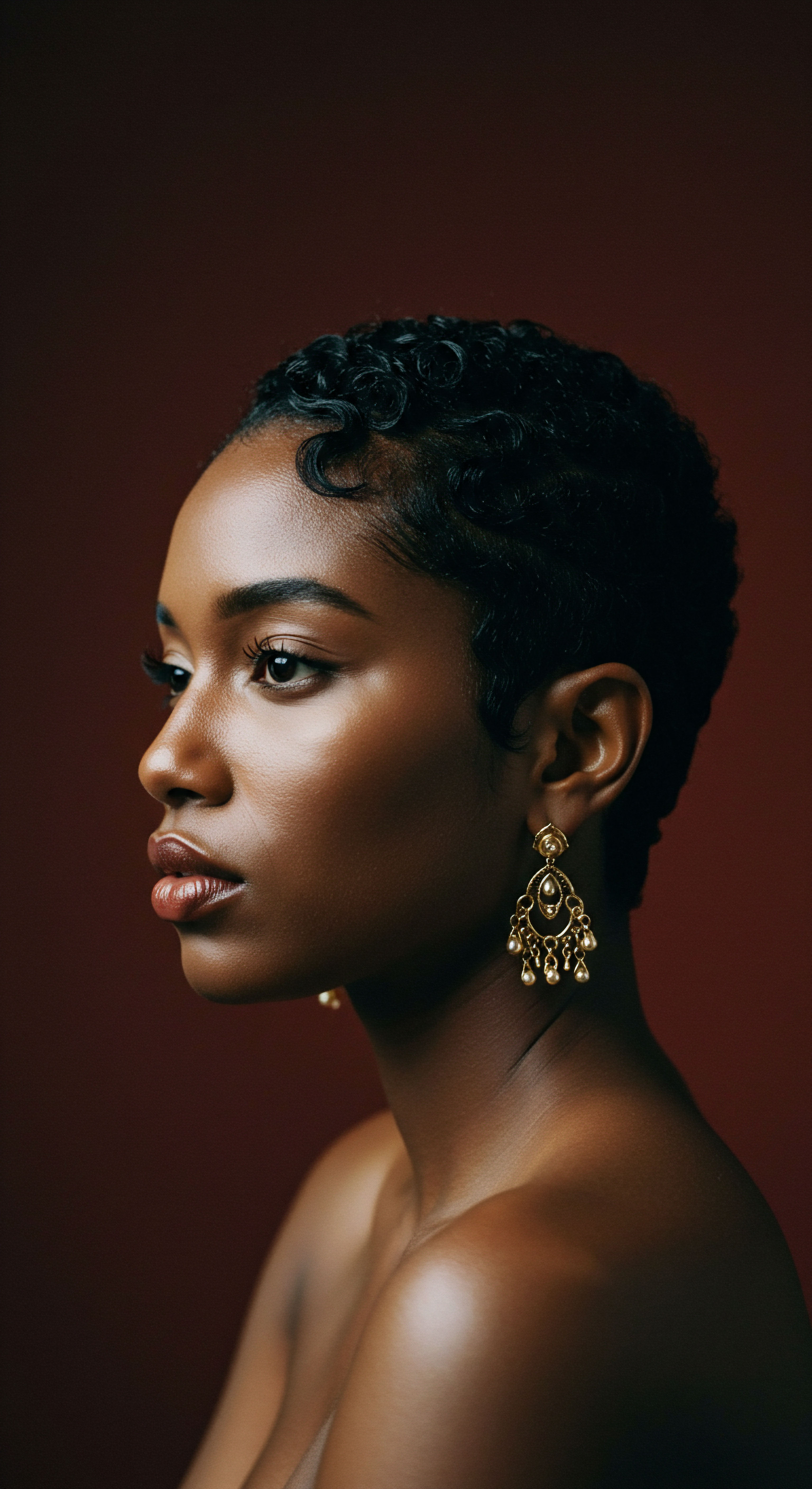
Styling and Adornment Practices
Ancient Egyptians engaged in a variety of styling practices, from simple daily maintenance to elaborate preparations for special occasions. These routines often involved specific tools designed to achieve desired looks.
- Hairpins and Fasteners ❉ To secure braids, buns, or more elaborate arrangements, hairpins were indispensable. These pins, as early as 4000 BCE, were made from materials like bone and ivory, and later, wood, steatite, glass, gold, silver, and bronze. While often concealed within the hair, some had decorative terminals that would protrude, serving as subtle ornaments. Headbands and hair-rings also served to hold hair in place, particularly for children.
- Hair Curlers ❉ Evidence suggests the use of tools akin to modern curlers. While direct archaeological finds of distinct curling irons are less common, the presence of curled hair in wigs and artistic depictions points to methods for setting waves and coils. It is speculated that some multi-purpose tools, possibly serving as tweezers or razors, might also have functioned as tongs for hair curling. Animal fat and beeswax were commonly used as setting agents, effectively acting as ancient hair gels to hold styles in place.
- Wig Stands and Boxes ❉ Wigs were a significant part of ancient Egyptian attire, worn by men, women, and children across social classes. These elaborate hairpieces required meticulous care and storage. Wig stands, often found in tombs, served to maintain the wig’s shape when not in use. Special boxes were used to store wigs, sometimes scented with petals or wood chips like cinnamon, ensuring they remained fresh and ready for wear.
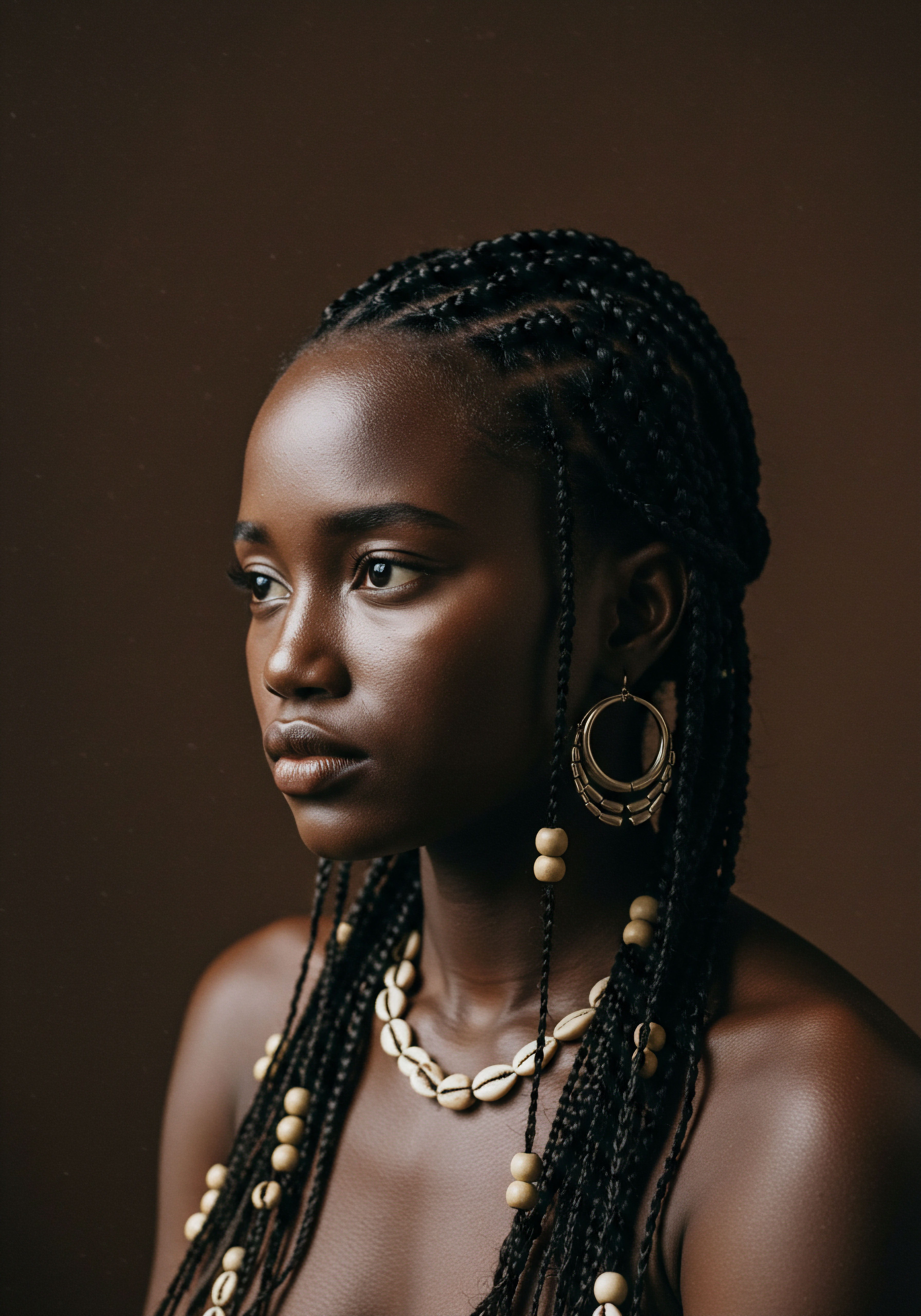
How Did Egyptians Maintain Their Hair and Wigs?
Maintaining both natural hair and the prized wigs required a regimen of cleansing, moisturizing, and setting. The arid climate necessitated constant attention to hydration, while social norms called for neatness and presentation.
For natural hair, regular washing was a routine, though the exact frequency remains unrecorded. They used various natural oils such as Almond Oil, Castor Oil, and Moringa Oil to keep hair hydrated, smooth, and shiny, also aiding in lice prevention. These oils were applied evenly, sometimes with the aid of combs made from fish bones. Clay was also used as a natural cleanser, removing impurities without stripping the hair’s natural oils.
Ancient Egyptians employed a blend of natural oils and specific tools to cleanse, moisturize, and style their hair and wigs, demonstrating a holistic approach to beauty.
Wigs, particularly those made of human hair, sheep’s wool, or plant fibers, were carefully conditioned with emollients and animal fats to prolong their life and maintain their appearance. A study on mummified hair samples, dating from Greco-Roman times, revealed a fat-based product, likely a styling gel, was used to keep hairstyles fixed, both in life and for eternity. This discovery underscores the importance of preserving personal appearance even in death.
Hair extensions, crafted from human hair, wool, or plant fibers, were attached to natural hair or wigs to add length and volume. These extensions were often adorned with beads, gold rings, or other ornaments, symbolizing status and beauty.
| Tool Type Combs |
| Primary Materials Ivory, Wood, Bone, Fish Bones |
| Purpose in Daily Ritual Detangling, smoothing, oil distribution, lice removal |
| Tool Type Razors |
| Primary Materials Copper, Bronze, Obsidian |
| Purpose in Daily Ritual Shaving natural hair (heads, beards, body) |
| Tool Type Tweezers |
| Primary Materials Bronze, Copper |
| Purpose in Daily Ritual Precise hair removal |
| Tool Type Hairpins |
| Primary Materials Bone, Ivory, Wood, Metal (Bronze, Silver, Gold), Glass |
| Purpose in Daily Ritual Securing hairstyles, buns, braids |
| Tool Type Mirrors |
| Primary Materials Polished Copper Alloy, Silver, Gold |
| Purpose in Daily Ritual Viewing and perfecting hairstyles |
| Tool Type Wig Stands |
| Primary Materials Wood, Reed |
| Purpose in Daily Ritual Maintaining wig shape and storage |
| Tool Type These tools reflect the blend of practicality and artistry in ancient Egyptian hair care. |
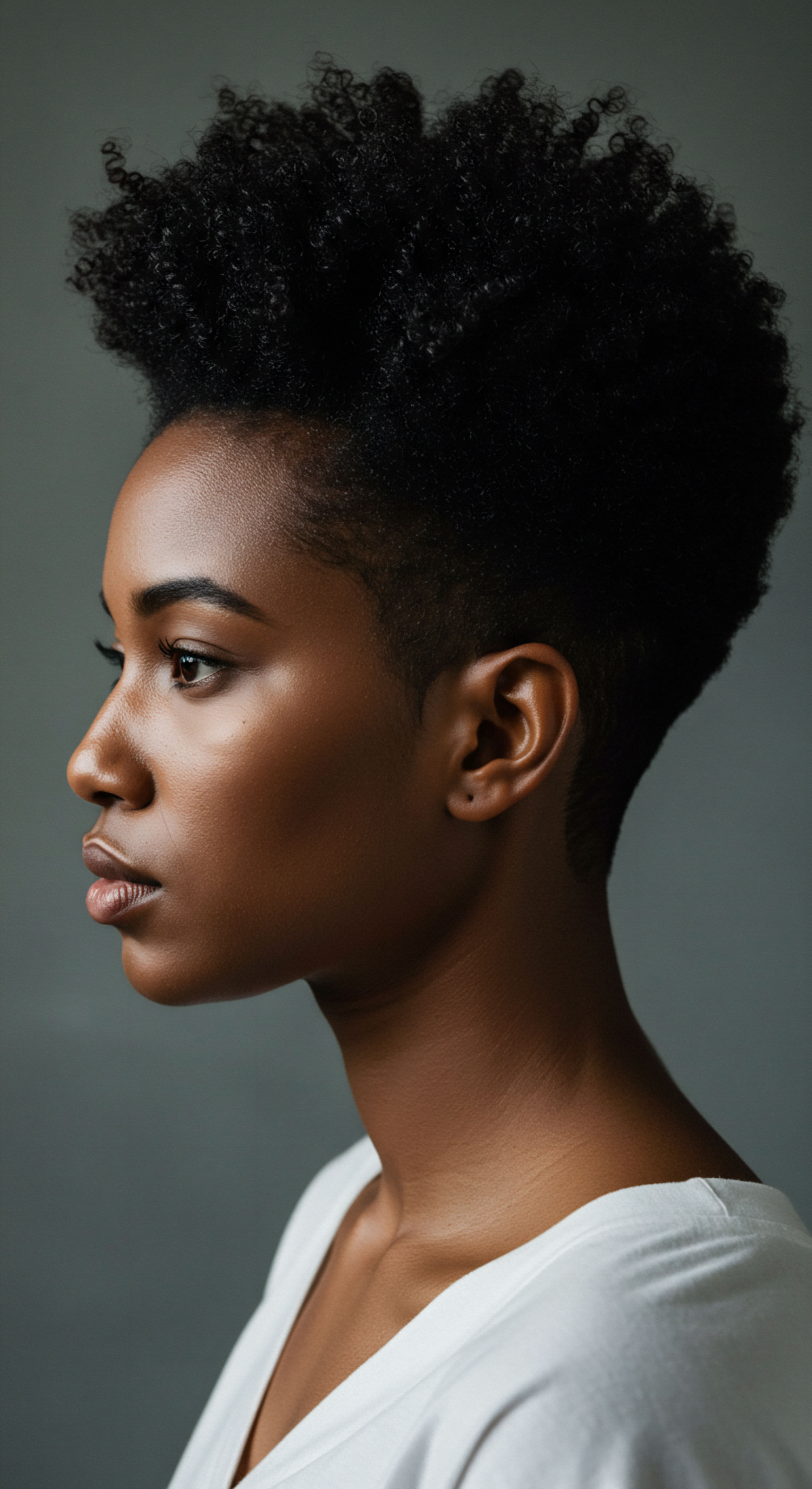
Relay
To truly appreciate the daily hair care tools of ancient Egyptians, one must step beyond their simple function and delve into the intricate web of culture, science, and societal meaning they carried. Hair, and the tools used to manage it, were not merely matters of personal grooming; they were potent symbols of status, identity, and even spiritual connection. The way hair was styled, or even removed, spoke volumes about a person’s role in the world and their hopes for the afterlife.

Hair as a Marker of Identity and Status
In ancient Egypt, hair conveyed significant information about an individual. Social standing, age, and gender were often communicated through hairstyles and the associated tools and adornments. For instance, while elite men often kept their natural hair short or shaved and wore elaborate wigs, non-elites working outdoors might wear their natural locks.
This distinction was not simply aesthetic; long hair, especially in the harsh climate, was impractical for laborers and could become dirty, whereas those with servants could maintain longer styles. The presence of wigs and hair extensions, often made of human hair or plant fibers, further underscored this societal hierarchy, with high-quality wigs being a luxury for the wealthy.
Priests, for example, were often required to shave their entire bodies, including their heads, to maintain ritual purity. This practice meant razors and depilatory mixtures were essential for their daily routine. Conversely, children universally sported shaven heads, often with a distinctive “sidelock of youth,” a single plait worn on one side, signifying their innocence and age. The transition to adulthood was sometimes marked by the cutting of this sidelock in a ritualistic offering to deities like Horus.

The Scientific Underpinnings of Ancient Hair Care
Beyond the visible tools, the ancient Egyptians possessed a practical understanding of hair science, particularly concerning ingredients. Their use of oils and unguents was not random; it was based on observations of their properties and effects on hair health.
- Castor Oil ❉ Widely used for its moisturizing properties, castor oil was a staple in ancient Egyptian hair care routines, believed to condition and strengthen hair and promote growth.
- Almond Oil and Moringa Oil ❉ These oils were applied to keep hair silky smooth, hydrated, and protected from the drying desert environment. Moringa oil, in particular, was valued for its lightweight texture and antioxidant content, believed to nourish the scalp.
- Henna ❉ Derived from the Lawsonia plant, henna was used as a natural dye to cover gray hair and impart a reddish tint. Beyond its coloring properties, Egyptians valued henna for its conditioning benefits.
A compelling example of their advanced understanding comes from archaeological science. A study published in the Journal of Archaeological Science in 2011 by Natalie McCreesh and colleagues at the University of Manchester analyzed hair samples from 18 mummies, some dating back 3,500 years. The research revealed that nine of these mummies had hair coated in a mysterious fat-like substance. Using gas chromatography–mass spectrometry, the researchers identified biological long-chain fatty acids, including palmitic acid and stearic acid, suggesting the ancient Egyptians used a fat-based “gel” to style and set hair, ensuring styles remained intact even in death.
This practice speaks to a sophisticated understanding of how to preserve hair structure, far beyond simple adornment. This finding provides a tangible, scientific data point that confirms their purposeful approach to hair styling and preservation.
Scientific analysis of ancient Egyptian mummies reveals a sophisticated use of fat-based products to preserve hairstyles, highlighting a deeper understanding of hair structure and lasting presentation.
The practical applications of these tools and substances extended to problem-solving. Wigs, for instance, offered a protective layer against the sun and were a practical solution for preventing lice infestations in a warm climate. Similarly, the regular application of oils helped to combat dryness and maintain scalp health.
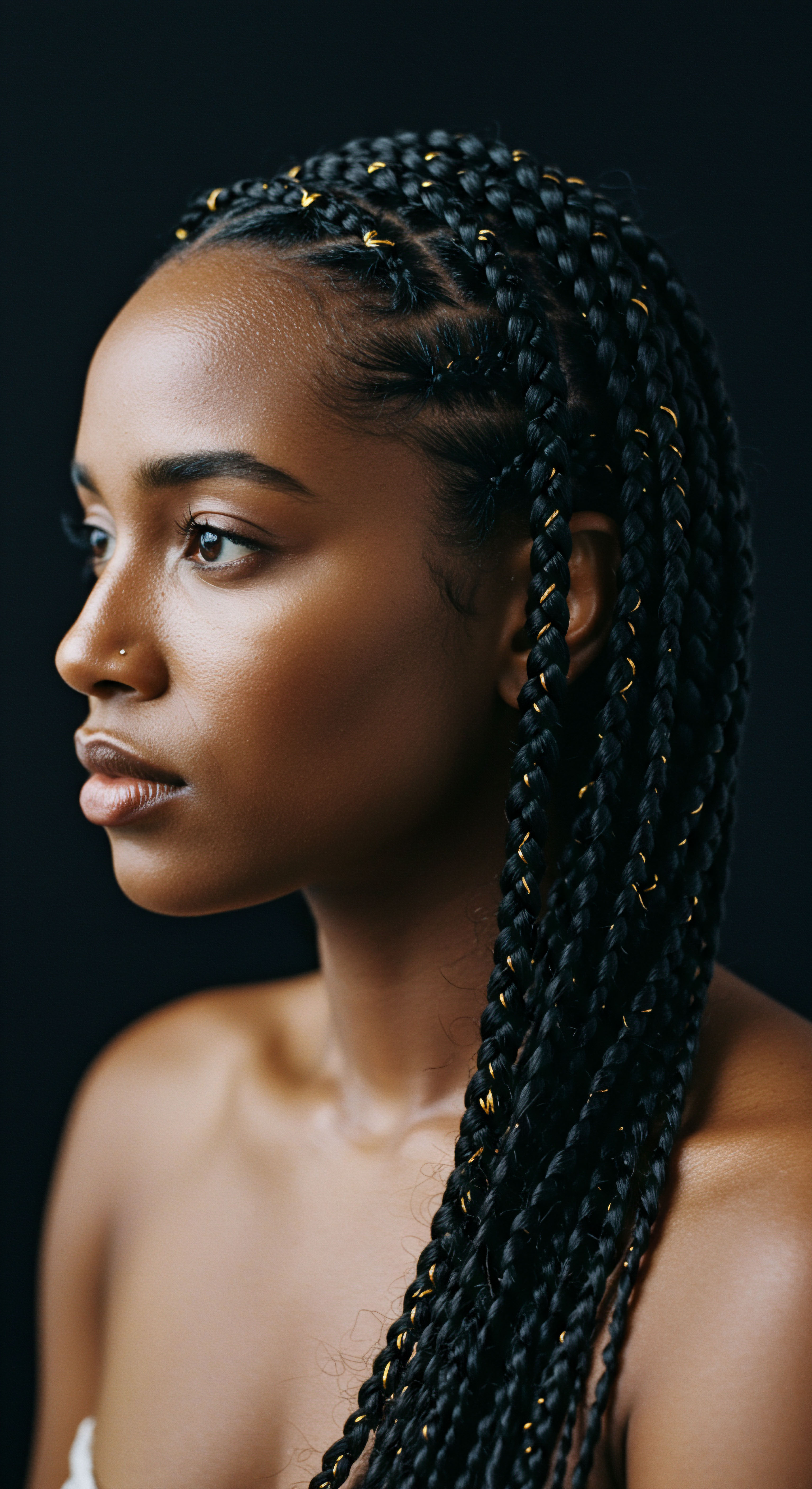
The Hairdresser and Barber in Society
The care of hair was so important that specialized professions arose. Barbers and hairdressers held respectable positions within ancient Egyptian society. Some individuals, like the royal butler Kemeni, even had elaborate cosmetic boxes containing compartments for ointments and mirrors, underscoring the personal investment in grooming. High-ranking hairdressers could hold other significant titles and were in close contact with royalty.
There is even a sarcophagus relief of Queen Kawit (from the 11th Dynasty) depicting her private hairdresser tending to her locks, fingers extended with care. This shows that even queens had dedicated professionals for their hair needs.
These professionals were not merely stylists; they were custodians of an important cultural practice. Their tools – combs, razors, hairpins, and the knowledge of various unguents – were wielded with precision, contributing to the overall aesthetic and social fabric of ancient Egyptian life. The continuity of these practices, from daily grooming to funerary rites, underscores the enduring significance of hair in this ancient civilization.
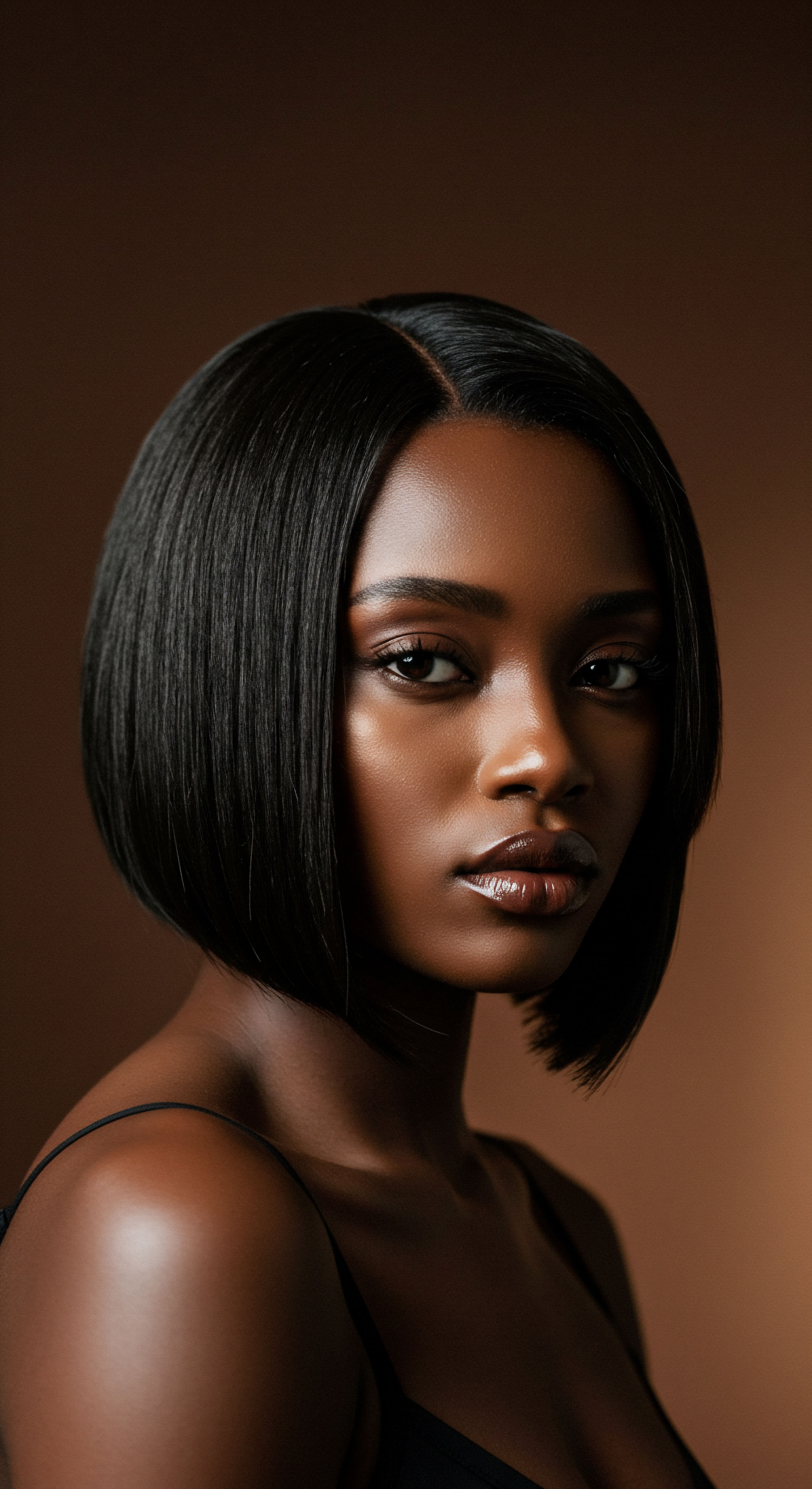
Reflection
The journey through ancient Egyptian hair care tools reveals a timeless truth ❉ the desire for self-expression and well-being through personal adornment transcends eras. From the simplest comb to the most elaborate wig, each artifact whispers stories of lives lived under the desert sun, of cultural values, and of an innate human connection to our strands. We find echoes of their practices in our own routines, a quiet continuity that links us to those who walked the earth millennia ago. The ancient Egyptians, with their purposeful use of natural elements and skilled craftsmanship, remind us that true hair wellness begins with understanding, respect, and a touch of reverence for what grows from our very being.

References
- Blackman, W. S. 1927. The Fellahin of Upper Egypt. London ❉ G. G. Harrap & Co.
- Fletcher, J. 1995. Ancient Egyptian Hair ❉ A Study of Its Production, Adornment and Significance. PhD diss. University of Manchester.
- Fletcher, J. 1998. Hair ❉ A History of Head Hair and Body Hair. New York ❉ Rizzoli.
- Fletcher, J. 2000. An Ancient Egyptian Wig ❉ Construction and Reconstruction. Internet Archaeology 42.
- Fletcher, J. 2016. The Egyptian Hair Pin ❉ practical, sacred, fatal. Internet Archaeology 42.
- Killen, G. 1994. Egyptian Woodworking and Furniture. Shire Publications.
- Kriesel, M. 1958. Die Entwicklung der ägyptischen Frisuren von der Frühzeit bis zum Ende des Neuen Reiches. PhD diss. University of Leipzig.
- Lucas, A. 1930. Ancient Egyptian Materials and Industries. London ❉ Edward Arnold & Co.
- McCreesh, N. et al. 2011. Hair Styling in Ancient Egypt ❉ An Analysis of Mummified Hair. Journal of Archaeological Science 38, no. 11 ❉ 3314-3318.
- Müller, H. W. 1960. Die Frisuren der alten Ägypter. Berlin ❉ Gebr. Mann.
- Petrie, W. M. F. 1927. Objects of Daily Use. British School of Archaeology in Egypt.
- Petrie, W. M. F. and Mace, A. C. 1901. Diospolis Parva ❉ The Cemeteries of Abadiyeh and Hu, 1898-99. Egypt Exploration Fund.
- Riefstahl, E. 1952. The Ancient Egyptian Coiffure. Brooklyn Museum Bulletin 14, no. 1 ❉ 1-14.
- Staehelin, E. 1966. Untersuchungen zur ägyptischen Tracht im Alten Reich. Berlin ❉ Bruno Hessling.
- Walker, S. and Bierbrier, M. 1917. Ancient Faces ❉ Mummy Portraits from Roman Egypt. British Museum Press.